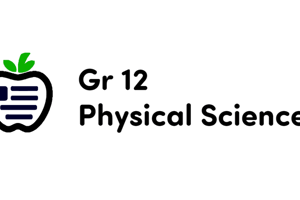Podcast
Questions and Answers
What is the net force acting on the block being pushed up the inclined plane?
What is the net force acting on the block being pushed up the inclined plane?
- 10 N
- 1.04 N
- 4.8 N
- 5.2 N (correct)
Which force has the biggest effect on the block's motion when being pushed up the inclined plane?
Which force has the biggest effect on the block's motion when being pushed up the inclined plane?
- The engine's thrust
- The weight of the car (gravitational force) (correct)
- The resistance offered by the air
- The friction between the tires and the road
What is the coefficient of friction between the block and the inclined plane?
What is the coefficient of friction between the block and the inclined plane?
- 30°
- 0.3 (correct)
- 9.81 m/s²
- 5 kg
Which equation is used to find the acceleration of the block?
Which equation is used to find the acceleration of the block?
What is essential for grasping the fundamental principles of motion and their applications?
What is essential for grasping the fundamental principles of motion and their applications?
What does Newton's second law state?
What does Newton's second law state?
What does the mathematical expression F = ma represent?
What does the mathematical expression F = ma represent?
Why is Newton's second law important in physics, engineering, and everyday life?
Why is Newton's second law important in physics, engineering, and everyday life?
What does force represent in Newton's second law equation?
What does force represent in Newton's second law equation?
How is force described in relation to an object's motion?
How is force described in relation to an object's motion?
Flashcards are hidden until you start studying
Study Notes
Exploring Newton's Laws of Motion: Focus on Second Law, Force, and Block Problems
As a vital foundation for understanding the world around us, Sir Isaac Newton's three laws of motion make up a cornerstone of classical physics. These laws, which describe the behavior of objects in motion, are well-known and widely studied. In this article, we'll delve into the second law, force, and block problems, which are essential aspects of Newton's laws.
Newton's Second Law: Acceleration, Force, and Mass
Newton's second law states that the acceleration of an object is directly proportional to the applied force, and inversely proportional to its mass. Mathematically, this relationship can be expressed as:
F = ma
Where F represents the force in Newtons (N), m stands for mass in kilograms (kg), and a signifies acceleration in meters per second squared (m/s²).
Newton's second law is central to understanding how force causes an object to accelerate or decelerate. It provides a quantitative relationship between force, mass, and acceleration, which is vital for solving many practical problems in physics, engineering, and everyday life.
Force: The Push or Pull on an Object
Force is the push or pull exerted on an object to change its motion. There are many types of forces, including gravitational force, electric force, friction, and even the force due to air resistance. Understanding how different forces interact is crucial for solving problems related to motion.
For instance, a car's motion is influenced by various forces acting upon it. These include the engine's thrust (push), the weight of the car (gravitational force), the resistance offered by the air (air resistance), and the friction between the tires and the road. Balancing these forces is essential to achieve the desired acceleration, velocity, and overall motion.
Block Problems: Solving Problems Involving Force and Motion
Block problems are a popular way to study the laws of motion. In these problems, we typically examine the motion of an object moving on a frictionless surface, such as a block sliding on an inclined plane or a simple pendulum.
To solve block problems, we'll typically need to identify the forces acting on the object and determine how they affect its motion. We can use Newton's second law to find the acceleration of the object, and then we can use kinematic equations to find its velocity and displacement.
Let's consider an example: A block of mass 5 kg is being pushed up an inclined plane of angle 30° with a force of 10 N. The coefficient of friction between the block and the plane is 0.3.
To find the acceleration of the block, we can use Newton's second law:
a = F_net / m
The net force acting on the block is the force applied by the hand (10 N) minus the force of friction (0.3 times the normal force, which can be calculated as the weight of the block):
F_net = 10 N - (0.3 * mg * sin(30°)) = 10 N - (0.3 * 5 kg * 9.81 m/s² * sin(30°)) ≈ 10 N - 4.8 N
The net force is approximately 5.2 N. Now we can find the acceleration:
a = 5.2 N / 5 kg ≈ 1.04 m/s²
This acceleration is the resultant of the block's gravitational acceleration and the acceleration due to friction.
In conclusion, understanding Newton's second law, force, and block problems is essential for grasping the fundamental principles of motion and their applications. By applying these principles, we can predict the behavior of objects and solve numerous practical problems in physics and engineering.
Studying That Suits You
Use AI to generate personalized quizzes and flashcards to suit your learning preferences.




